Get social media right or "you're stuffed"


Every time you use something that you aren't being charged for, remind yourself, it's because you are the product. SMH.com.au, LinkedIn, Facebook, Pinterest all let you read and/or post for free because they are making money out of YOU. Businesses of all kinds are constantly gathering data from you and about you and your contacts most of the time you do something digitally. Facebook can now access your phone’s microphone to eavesdrop on what you are listening/watching while you post an update.
The upside is you will be served ads or content or search results that have been vetted just for you. The downside if you're marketing your own business online is you have to recognise the average person will increasingly expect to receive only what they care about.
Social marketing 101: What's in it for your customer?
As Jane Caro told a room full of online marketers recently, people are "entirely able to screen you out no matter how much money you put behind (your message.)
“If the message is not relevant, if the message doesn’t mean anything to them, you’re stuffed.
“the power has moved from those people with large pockets to the population at large. But you can have no money at all and send a Tweet that resonates and takes off like wildfire and suddenly you’re famous.”
Research by McKinseys has shown businesses have found the primary benefit of embracing social media is the ability to open a dialogue with customers and actually listen to what customers want. Not talk at them like a brochure, but understand what they care about and respond, or learn and move on. Here's a reminder of the simple etiquette of doing a business on the Itnerweb.
3 rules of social media engagement: the 3 Rs
To participate in social media as a representative of an organistion or company it is important to remember 3 rules.
Be clear about who you are representing, take personal responsibility for ensuring that any references to your company are factually correct and accurate and do not breach confidentiality requirements, and show respect for the individuals and communities with which you interact.
Remember, you are personally responsible for the content of the posts online. If employing a ghost writer, it is your responsibility to sign off on final content. Ensure any information about your products and services that you provide is true and factually accurate.
Respect copyright, privacy, financial disclosure and other applicable laws when publishing on social media platforms.
If you break the law you may also be personally liable.
Read MoreThere is no best way to compete


Remember that scene with Steve Martin ordering coffee L.A. style – "a half double decaf decaffeinated half caf... with a twist of lemon." (The video is at the end for you to enjoy.) It seems every single decision we now make throughout the day comes with an endless number of choices.
So it came as no surprise when a global a marketing guru presented research to the World Business Forum in Sydney that proves, in industry after industry, there is no single best way to compete.
How to differentiate your brand today
The worst mistake in strategy is to compete with rivals on the same dimensions, Professor Michael Porter says. The man who’s made strategy his life work says many businesses still get confused around the definition of the concept of differentiation, and that even trying to be ‘the best’ means a business is starting in the wrong place strategically.
Porter points out "we all know it’s impossible to meet every need of every customer uniquely well. That’s impossible. There’s no one way to deliver value.
“Strategy starts with a notion that the fundamental question is not how to be the best, it’s actually how to deliver something unique. To the customers you’re choosing to serve. Not because what you’re doing is ‘the best’ but because what you’re doing is delivering distinctive value.
Strategy is about being unique. That’s ultimately what all successful companies are able to achieve for some period of time."
The formula for growing challenger brands
If today we are spoiled for choice, it follows the prospective customers for our business are too. So instead of seeking some magic wand global answer, a better strategy is to identify one thing people you're trying to serve actually care about. Something that you're good at delivering. Finding your mojo is the fundamental starting point in our formula for growing challenger brands.
Read More
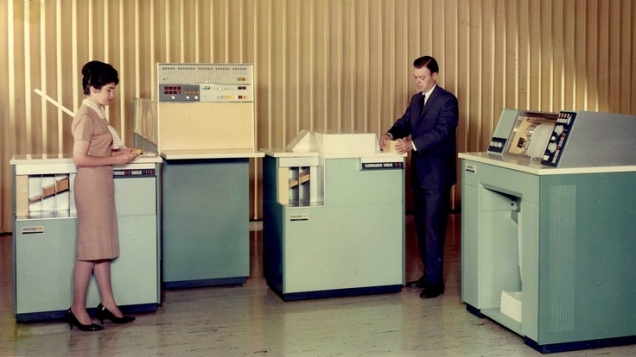
The head of marketing will soon be spending more on IT than the head of IT, so a recent study by Gartner found. Last week at the annual adfest in Cannes, Ogilvy's top creative warned of how too much faith was being put into data and not enough into ideas. This was resulting in well planned and placed ads that don't actually achieve much.
Where is the real value to be found in marketing?
The more things change the more they stay the same. The problem in the past was IT managers spent a fortune, first on hardware and then software to sytemise the running of the business. Whether or not the customers' experience was improved was not the concern of the CIO. You only had to dial 3 for support to know that. The main focus of the CIO was all about having bragging rights his IT budget was bigger than the competitors'.
Now we are seeing marketing managers playing the same game, "my Big Data budget is bigger than yours." Businesses are paying more and more to collect big brother levels of information on people. You've experienced the result like everyone else – being hit with ads on Facebook when all you want to do is see a picture of a friend's fishing trip. This may be how Zuckerberg will try to make an earn for shareholders, it isn't the road to marketing Nirvana. Just like the IT managers of the past, what the customer wants once again isn't the focus.
The constant here is managers within the business concentrating on the business of the business, rather than looking for ways to make a customer's life better. You probably recognise the trap, I fell for it. For several years I paid too much time and money on experienced professional staff and IT consultants to implement and manage programs to systemise my business. None of it added to the power of connecting and motivating, inspiring or creating. It was money spent on smooth bureaucracy for neatness sake and failed to grow my customers' businesses, nor consequently my own.
Rational Vs emotional marketing approach
"Investment" in IT has always been a rational spreadsheet sell to the chief decision maker. How often have you witnessed a marketing department asking for a "brand building" budget lose out to the CIO who could promise a guaranteed ROI from some new IT? Problem is marketers seem to be giving up the fight at the board level for using emotion to connect with customers, instead choosing the easy route of asking for funding for data. Spend X get Y. Yet economic modelling consistently shows the customer is innately irrational, human beings are pre-programmed that way. This is at the heart of getting the best marketing ROI.
Your customers are more emotional when making purchase decisions than rational
The influential role of emotion in consumer behavior is well documented, here is a summary by Antonio Damasio, professor of neuroscience at the University of Southern California –
- MRI neuro-imagery shows that when evaluating brands, consumers primarily use emotions (personal feelings and experiences) rather than information (brand attributes, features, and facts).
- Advertising research reveals that emotional response to an ad has far greater influence on a consumer’s reported intent to buy a product than does the ad’s content – by a factor of 3-to-1 for television commercials and 2-to-1 for print ads.
- Research conducted by the Advertising Research Foundation concluded that the emotion of “likeability” is the measure most predictive of whether an advertisement will increase a brand’s sales.
- Studies show that positive emotions toward a brand have far greater influence on consumer loyalty than trust and other judgments which are based on a brand’s attributes.
So it follows a business that concentrates on chasing efficiency by spending big on data risks failing to connect on the more powerful emotional level.
Challenger brands care most about what the customer thinks matters most
Challenger brands that actually care about what customers want are winning by using the Cloud to remove superfluous steps from the delivery of products and services, often without big IT budgets. One example I know intimately is an Australian first, UNOsmsf, Cloud based Self Managed Super.
The rational customer benefit: More choice, more control, lower fees. We'll be using an emotional truth to appeal to prospective clients: your fund can do better than your mates with more money who are paying through the nose for an average product the big banks want to sell them using big data.
Check out the superannuation challenger brand taking on the banks from the Cloud.
Read More
Top 5 biz management blunders


Have you read any of Robert Gottliebsen's recent articles on the impending 12 billion dollar plane crash coming our way? Australia's purchase of three squadrons of Joint Strike Fighters – 58 at over $100million each is a fine example of the 5 management blunders many businesses tend to make.
5 blunders for management to avoid (& tips on marketing)
Gottliebsen quoted Liberal senator Jensen, a scientist, explaining what a blunder the decision to purchase the JSF is proving to be. Here I paraphrase Robert, with my own warnings on the blunders to avoid when making decisions about marketing::
Rule 1 of management blunders
Ignore expert advice and go with your gut. A decade ago Australia's manager at the top, John Howard, ignored the advice of aviation experts and bought into the development of the JSF. In my experience, being told the CEO doesn't believe in marketing or paying for external advice is more common than finding a boss willing to admit where their expertise ends.
Rule 2 of management blunders
When you make a big decision, those who continue to oppose you need to be pushed aside -- everyone must get with the program. Creativity is stifled by group think, yet it's creative thinking that helps businesses compete on their own terms, rather than taking the category head on.
Rule 3 of management blunders
All staff involved in the decision are ‘looked after’. E.g. In the case of the JSF, Senator Jensen has studied carefully what happened and says "there are too many who get jobs with contractors where they have provided advice favouring that contractor's product.” Advertising is renowned for managers procuring from friends who are designers, family members who know photoshop and printers who give them tickets to the rugby.
Rule 4 of management blunders
Delay as long as possible in telling the people at the top that the decision is wrong. In corporations, big, sudden write-downs are often caused because management down the line keeps putting a good spin on the data to keep their jobs, until finally they have to confess. Or in my experience, they are found out long after they've moved on. One CEO didn't realise that for two years none of my proposals to fix their problems had ever been passed up to him by his marketing manager. It was only after firing the manager he discovered an email trail where my strategies and estimates had been constantly forwarded to her close friend, who was then being commissioned for services beyond their capability at far higher prices.
Rule number five
Obscure the costs with all sorts of creative accounting. In marketing and advertising, this is really easy when so many managers claim to know the cost of everything, when they actually don't understand the value of anything.
The common theme here is the tendency of management to throw staff at problems, at great long term cost, when trusting experts would be better for business.
Read More
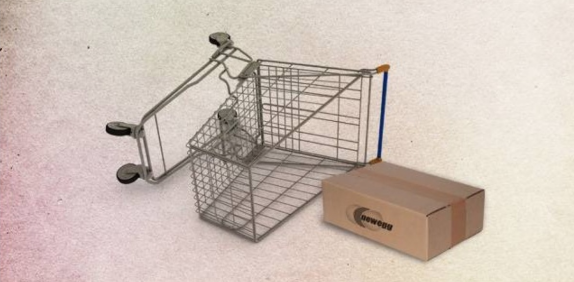
The idea that online retail is about discounts isn't in line with the facts. While margins might be tighter, e-commerce is no longer just about bargains and end-of-line clearances. The latest NAB Online Retail Sales Index shows just how broad Australian retailing has become. Daily Deals sites are stuck at 3% share. The biggest online sales growth stories now are in liquor and groceries.
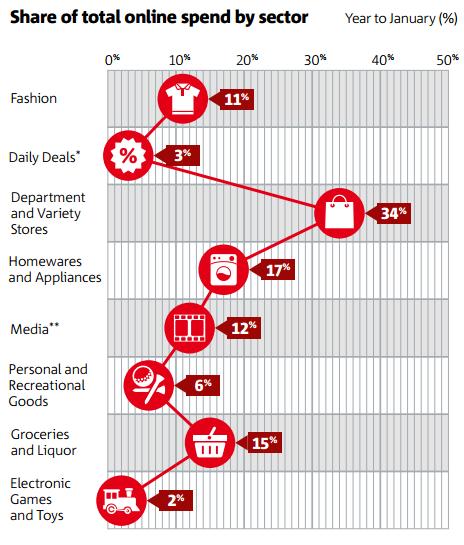
Department stores and appliance retailers the big winners, or losers online?
The mainstreaming of e-commerce can be seen in the leadership of department store products with a whopping one third of online spending. Once slow to adopt, Myer now offers 119,000 individual products online.
Domestic operators still have the lion’s share of online sales at around 75%. Gerry Harvey’s call for a GST on foreign online sales is just noise when you consider he mostly sells homewares and appliances, the second largest online category. I don’t see Australia Post delivering washing machines bought from Best Buy New York via their online store as a threat to Gerry. The threat is internal, his stores are failing to add value to the sales process and Harvey Norman still doesn't appear to have a strategy to compete with local online challengers.
Challenger brands have an advantage online
If anything, e-commerce puts the power back into the hands of customers who want to deal direct with manufacturers. Australian challenger brands, when they make a product that locals actually want, can cut out the blood sucking Coles/Woollies duopoly and the Gerry Harvey’s.
When brands reinvest into marketing a portion of the retailer margins that going online cuts from the delivery chain, they can grow share long term. This way e-commerce becomes a WIN, WIN equation for brand and customer.
An example of this approach is the transformation of a traditional Australian designer manufacturer of compression and sportswear – Quick Response. UNO has helped them transform from a wholesaler at the mercy of retailers to a direct-to-consumer e-business. This challenger brand is now competing with SKINS, (the retail market leader with a high priced foreign made product), by offering superior Australian made garments direct online, at a better price. Check out the QRS compression online store.
The future for online retail marketing
While retail sales generally have been mostly flat, ABS figures show Australian’s spent 27% more online in the year to March than the year before.
The NAB online spend index doesn’t include online shopping paid for by Paypal, transfers or EFTPOS, so the 6.5% of all retail spending measured in the latest report to March 2014 is an underestimate of the reality. Marketers need to view online retail as a growing opportunity for current business growth, not just a nice to have in the future.
Source: National Australia Bank Online Retail Sales Index.
Read MoreTruth in advertising?
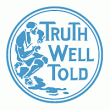
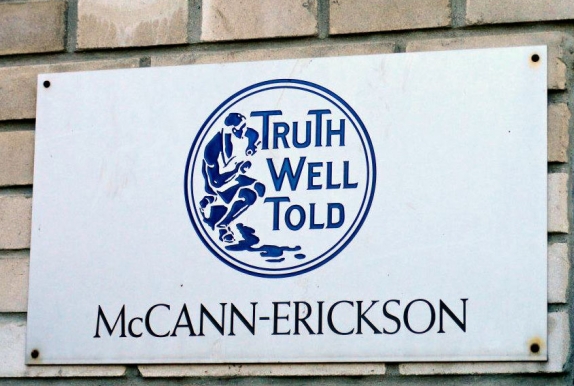
Which professions are most trusted in 2014? Research shows the Australian public rate nurses 91% for ethics and honesty, once again at the top, whereas most professions don't rank well in the trust stakes at all.
No prizes for guessing who rates last at 3%, it's the same profession that has been at the bottom every year since Roy Morgan began their annual "Image of Professions" survey in 1986.
2014 rankings of professions for ethics and honesty
- Nurses
- Pharmacists
- Doctors
- High Court Judges
- Dentists
- School teachers
- Engineers
- Police
- Supreme Court Judges
- University lecturers
- Accountants
- Bank managers
- Lawyers
- Ministers of religion
- Public servants
- Public opinion pollsters
- Financial planners
- Directors of public companies
- TV reporters
- Newspaper journalists
- Business executives
- Insurance brokers
- Stock brokers
- Talk-back radio hosts
- State MPs
- Federal MPs
- Union leaders
- Real estate agents
- Advertising people
- Car salesmen
Source: Roy Morgan annual 'Image of Professions' survey for 2014
Read MoreSince the GFC businesses and investors have struggled to find consistent ways to achieve double digit returns. You can continue to blame the shake out that the credit crunch brought down on our heads, or perhaps the current tough environment is the new normal. The new normal is a world where businesses and governments and media proprietors no longer have control. Everything has been digitised, and thanks to Google and global Internet access from mobile phones at low prices the slevers are now controlled by the public, your customers.
The last decade has seen what Deloitte term the era of Digital Disruption. In a paper last year they identified which Australian industries are facing a short fuse, big bang trashing of their business models. Traditional business models that could control supply and demand and charge a premium have dissappeared or in the case of Delloittes hit list of financial services and are about to.
The businesses that prosper will be those that can embrace the new digital normal. It is the business managers that apply design thinking to their entire way of operating that will survive. The good news for SMEs is they have eless to lose than corporations and also have the management structure to embrace change. The best thing about all this si design thinking makes more money for a business than traditional management approaches. Here are some figures on just how much more profitable design centric businesses have been since the GFC.
Design Thinking has doubled the returns of companies across a range of industries
The Design Management Institute in the US worked together with Motiv Strategies to create a share market index for tracking the returns of businesses that have Design Thinking at the centre of the organisation. Called the Design Value Index, it shows the 15 rigorously-selected companies that understand the value of design beat the S&P Index by a whopping 228% over the last 10 years.
Who are these profit powerhouse businesses and what do they have in common?
Design is an integrated function across the entire enterprise; they invest in design and it shapes the way employees interact and report, management structure is flat or receptive to ideas; experienced design executives are given power to direct design activities; and there is a senior leadership-level commitment to design. Some of the companies on the list won’t surprise you – Apple, Coca-Cola, Walt Disney and Nike. Others might – Ford, Herman-Miller, IBM, Intuit, Newell-Rubbermaid, Procter & Gamble, Starbucks, Starwood, Steelcase, Target and Whirlpool.
Designers are lateral thinkers, utilise their creative leaps
The way designers think is much more open to ideas, random thoughts from diverse sources and then building on these. By starting with the question what does a customer want and what makes them happy the designer is liberating from current accepted practices within a business. They challenge all aspects, collaborating across all the people in a business from sales to complaints, production to procurement. Compare this to control and command structures, like the public service where you aren’t allowed to ask a superior a question let alone challenge what they believe is the way it’s always been done.
Change, rather than wait to be redundant. As Deloitte warns, redundancy is coming sooner rather than later.
Read More
Since the GFC businesses and investors have struggled to find consistent ways to achieve double digit returns. You can continue to blame the shakeout that the credit crunch brought down on our heads, or accept that the current tough environment is the new normal. We now have to operate in a world where businesses and governments and media proprietors no longer have control. Everything has been digitised.
Thanks to Google the information levers are now controlled by the public. In other words, your customers now call the shots.
to Google the information levers are now controlled by the public. In other words, your customers now call the shots.
The last decade has seen what Deloitte term the era of Digital Disruption. In a paper last year they identified which Australian industries are facing a short fuse, big bang trashing of business models. Traditional business management techniques that could control supply and demand and charge a premium have disappeared. You can see from Deloitte's hit list, even industries not used to rapid change like financial services and arts and recreation are about to face significant disruption.
Deloitte's Digital Disruption map
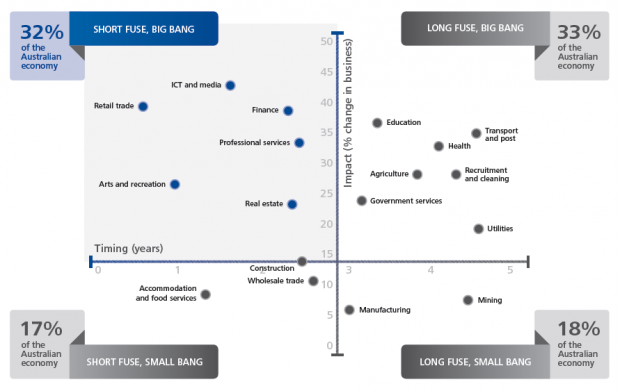
The formula for small & medium business survival in this time of disruption
The businesses that prosper next year and beyond will be those that can embrace the new digital normal. It will be the business managers who apply design thinking to their entire way of operating that will survive. The good news for SMEs is they have less to lose than corporations and more flexibility in the management structure to embrace change.
SMEs are perfectly placed to become tomorrow's challenger brands. The best thing about all this is design thinking makes more money for a business than traditional management approaches. Here is a chart that shows just how much more profitable design-centric businesses have been since the GFC.
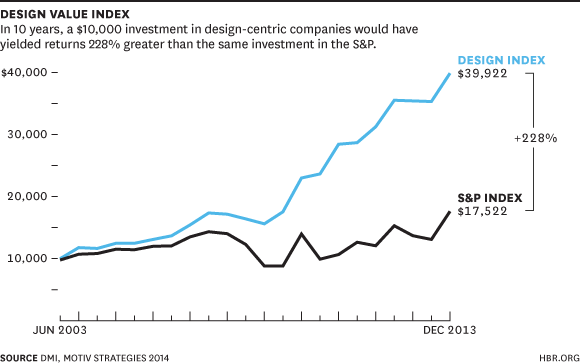
Design Thinking has doubled the returns of companies across a range of industries
The Design Management Institute in the US worked together with Motiv Strategies to create a share market index for tracking the returns of businesses that have Design Thinking at the centre of the organisation. Called the Design Value Index, it shows the 15 rigorously-selected companies that understand the value of design beat the S&P Index by a whopping 228% over the last 10 years.
Who are these profit powerhouse businesses and what do they have in common?
Design is an integrated function across the entire enterprise; they invest in design and it shapes the way employees interact and report, management structure is flat or receptive to ideas; experienced design executives are given power to direct design activities; and there is a senior leadership-level commitment to design. Some of the companies on the list won’t surprise you – Apple, Coca-Cola, Walt Disney and Nike. Others might – Ford, Herman-Miller, IBM, Intuit, Newell-Rubbermaid, Procter & Gamble, Starbucks, Starwood, Steelcase, Target and Whirlpool.
Designers are lateral thinkers, utilise their creative leaps
The way designers think is much more open to ideas, random thoughts from diverse sources and then building on these. By starting with the question what does a customer want and what makes them happy the designer is liberating from current accepted practices within a business. They challenge all aspects, collaborating across all the people in a business from sales to complaints, production to procurement. Compare this to control and command structures, like the public service where you aren’t allowed to ask a superior a question let alone challenge what they believe is the way it’s always been done.
Change, rather than wait to be redundant. As Deloitte warns, a big bang of disruption is coming sooner rather than later for most businesses.
Read MoreHow do you lead your business in the Digital Age?
The answer is in the mail. Australia Post is over 204 years old, but that hasn’t stopped it making the most of the digitised world. At a presentation to business leaders at the AGSM Leading The Digital Enterprise event yesterday, I found Tracey Gosling, a director of Australia Post, the biggest surprise. While the usual suspects, like the Head of Policy at Facebook and an author on Innovation helped open the eyes of the bank managers and bureaucrats in the room to the way generation X and Y want to be treated at work, it was the true stories of change at Australia Post I found most useful.

What's the future for AusPost in a digitised world?
Tracey shared real examples of the often simple ways ordinary people in their business have made changes that have worked. They show us what can actually be achieved when the starting point is very grim. Which gives real hope for small and medium sized businesses that aren't as tied down by the inertia of a monopoly like AusPost.
Tracey painted a picture of a vast post office workforce laboring under the emotional burden of the fear of change. Imagine you were a postie, one of my schoolmates from 30 years ago still is. Imagine over the last decade the postie doing the daily rounds would feel the bag of mail on their back was lighter than the week before. And next week it will be lighter still as people stop posting letters. They'd be worrying when will the day come there is no mail to deliver and they're out of a job?
To survive Australia Post has to manage a bigger change to the way customers exchange information than past revolutions like telegraph to telephone, horse borne deliveries to airmail, phone to fax. The Internet has changed everything more significantly than any of those innovations. Manage the change they have.
To quote the Australia Post annual report: “For the 13th consecutive year, we met or exceeded all of the performance standards that relate to our community service obligations. We delivered 95.5 per cent of domestic letters on time or early (against our 94 per cent target) and we increased the number of postal outlets to 4,429 nationwide. Total revenue grew to $5.9 billion and our after-tax profit increased by 10.9 per cent to $311.9 million. This means net profit has grown 21 per cent per annum since we enacted our Future Ready transformation program."
What has AusPost changed to keep up? Nearly everything, they had to. Last year they lost $189 million on mail delivery. AusPost now makes more from servicing e-commerce businesses and other activities that didn’t exist just a decade ago. There are secure 24/7 Parcel Lockers within minutes drive of most homes for out of hours parcel deliveries, digital self serve kiosks in post shops and soon digital I.D. recognition software that will mean documents like banking applications and contracts won’t need signatures by hand.
If a bureaucracy can go digital, so can your business
These changes to a huge and diverse business are making sure it can remain competitive as digitisation changes the world. As with most things in business, change management is being enabled at Auspost from the top. CEO Ahmed Fahour is a case study in the new style of management required for the digital age – leadership by openness, not power. This infographic sums it up nicely.
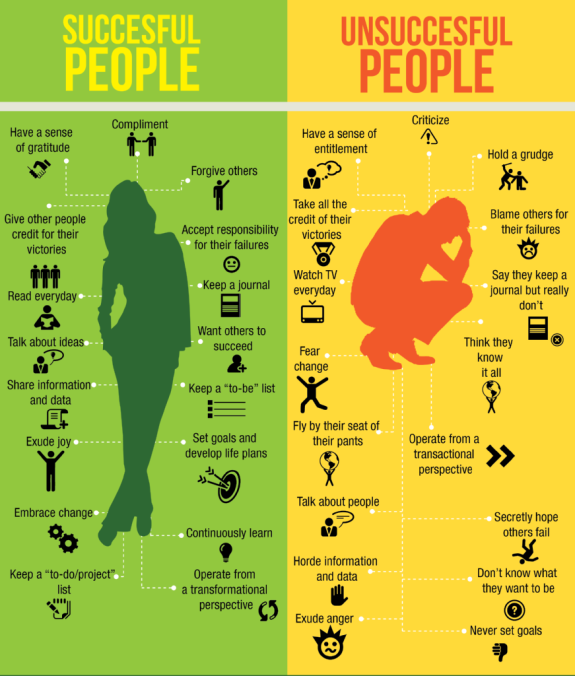
View this image on Pinterest.
Here are some examples of how Ahmed Fahour has let go of control:
1. Let staff fail
Individuals in offices can change their methods behind the counter to see if it works better than current processes without asking prior permission from senior management. If it doesn’t work, no great loss. If it does make an improvement, it’s shared across the organisation.
2. Social media is for everyone
While most government departments still don’t allow social media or even Google to be used in the office, Fahour has let employees at every level of share an opinion on Facebook. Just a few years before only 2 people were officially given the role to manage social media, yet even then there were 15,000 conversations happening on social media each year amongst staff.
Businesses need to recognise they can’t control what staff want, or constantly roadblock how they want to do it. Indeed today, in the words of former Cisco Senior Director Martin Stewart-Weeks, "a network routes around an obstacle." It's the same with staff, they will go around you, or leave.
3. What does the customer want that they’re not getting?
To improve the way they can fulfill for e-commerce customers, staff who had never shopped online were encouraged to do so in work hours. This led to an understanding at many levels of post employee of what online businesses do well and not so well, and discover what shoppers want from the whole order to delivery process. One consequent innovation is the 24/7 Parcel Locker, which means you don’t have to be at home to receive a valuable e-purchase.
4. What can you do that’s new?
Things are changing fast, so what you’ve always sold in the past is less likely to be as attractive to new customers tomorrow. Again, take inspiration from the top postie:
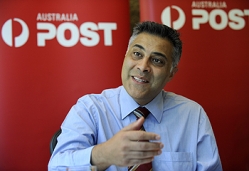 “We capitalised on the boom in online shopping with the Parcel & Express Services segment earning profit of $354.8 million, on the back of 9.3 per cent growth in domestic parcel volumes. And, despite difficult retailing conditions, Retail Services profit again grew to $200.6 million, mainly through adding new financial and identity services.”
“We capitalised on the boom in online shopping with the Parcel & Express Services segment earning profit of $354.8 million, on the back of 9.3 per cent growth in domestic parcel volumes. And, despite difficult retailing conditions, Retail Services profit again grew to $200.6 million, mainly through adding new financial and identity services.”
“Initiatives are all focused on capturing our immediate customer growth opportunities in the digital economy – especially in e-commerce, digital communications and trusted services.”
We are constantly exploring the new possibilities with our clients, it's how we help to keep them growing as successful challenger brands.
Read More
 Making meaningful comparisons as a consumer is challenging, especially with superannuation. Christopher Zinn says we need to understand how to make informed choices when incumbent businesses operate in a "confuscopoly".
Making meaningful comparisons as a consumer is challenging, especially with superannuation. Christopher Zinn says we need to understand how to make informed choices when incumbent businesses operate in a "confuscopoly".
It is a big ‘what if’ because too many businesses profit from the lack of determination of their customers for better products, services and even prices.The public’s desire for improvement is dulled by a widespread disengagement, resignation and inertia that anything they do may actually be much better for them.
And the consumer malaise seems worse in those markets which really count most because of the sums involved: superannuation, health and other insurances, energy such as electricity and telecommunications.
The symptoms are a lack of switching to better offers, which tends to benefit the incumbent above the challenger brand, and even paying over the odds by sticking with the wrong plan and perhaps the wrong provider.
The figures are sobering. The Australian Communications and Media Authority says poor plan choice around telecoms has cost consumers a probably under-estimated $1.5 billion a year.
Superannuation is confusing for customers
The ATO holds more than $18 billion in lost superannuation accounts. And despite more than 11 million Australians are covered by private health insurance less than 40,000 of them switch each year.
The fault is not solely the consumers. The ‘confusopoly’ of the mobile phone market in particular makes meaningful comparisons more than challenging.
Our cognitive biases, which make us particularly vulnerable to decisions around money and cause us to favour the present as opposed to the future, do not serve us well when it comes to assessing strategies around retirement savings.
And the complex and changing rules around health cover and premium rebates tend to drive policy-holders to sit pretty instead of seeking better value.
Of course some consumers are determined and realise a little time and effort in acquiring knowledge of these markets can save significant pain and expense.
But there’s a limit to even their patience and how much effort is worth it for how little a reward. There’s also the issue of expertise and the imbalance of information: as consumers we are amateurs buying from professionals.
We may only purchase a new car every few years, but the sales staff sell them every day, and however canny you are they will always know more about the vehicle, its true value and how to upsell you on various unnecessary warranties.
One way to correct this asymmetry, as it’s sometimes called, is to gather like-minded consumers together and use their numbers as leverage in negotiating better terms.
It’s already happening in specific markets such as energy and insurance as One Big Switch, with whom I used to be director of campaigns, has demonstrated here and overseas.
Another way is selectively reforming markets by regulation. In Australia conflicts of interest with financial planners led to the Future of Financial Advice (FoFA) legislation.
The government is seeking to severely dilute these much needed consumer protections, claiming they are somehow excess ‘red-tape’. In fact they represent a much-needed shark-proof cage for consumers to more safely navigate financial waters.
In the US and UK regulation is helping liberate consumers’ usage data from the back offices of utilities and banks so citizens can employ trusted third parties to crunch the numbers and help them make better decisions.
The determined consumer can take back control
Being determined as a consumer is not just a state of mind, although that helps. In the future it will require the technologies which can bring us together quickly and cheaply to use some people power in markets.
It will also require more consumers to get hold of their own data and then find emerging intermediaries to help them make real sense of the complexity and choice fatigue which bedevils too many markets.
Determined consumers do not need to be told to shop around or read the fine print. They already know that, but they do need help in turning their determination into better decisions.
Christopher Zinn is an independent consumer advocate currently running a campaign to highlight the financial advice protections (www.saveourfofa.com.au). His other initiative is www.determinedconsumer.com.au which is aimed at motivating consumer action. UNO worked with Chris on consumer empowering programmes at CHOICE. He also co-founded One Big Switch as well as being a repoorter/producer at the ABC, Channel Nine and several newspapers.
Read More
Here are the stats that show why banner ads deliver the lowest ROI in the digital marketing mix.
- Over 5.3 trillion display ads were served to U.S. users last year. (ComScore)
- That’s 1 trillion more than 2009. (ComScore)
- The typical Internet user is served 1,707 banner ads per month. (Comscore)
- Click-through rates are .1 percent. (DoubleClick)
- The 468 x 60 banner has a .04 percent click rate. (DoubleClick)
- An estimated 31 percent of ad impressions can’t be viewed by users. (Comscore)
- The display advertising Lumascape has 318 logos. (Luma Partners)
- 8 percent of Internet users account for 85 percent of clicks. (ComScore)
- Up to 50 percent of clicks on mobile banner ads are accidental. (GoldSpot Media)
- Mobile CPMs are 75 cents. (Kleiner Perkins)
- You’re 471 times more likely to survive a plane crash than click a banner ad. (Solve Media)
- 15 percent of people trust banner ads completely or somewhat, compared to 29 percent for TV ads. (eMarketer)
- 34 percent don’t trust banner ads at all or much, compared to 26 percent for magazine ads. (eMarketer)
- 25-34-year olds see 2,094 banner ads per month. (ComScore)
- 445 different advertisers delivered more than a billion banner ads in 2012. (ComScore)
Put simply, banner ads don't work
Remember these figures next time a media sales rep tries to sell you a banner ad campaign. Even if it’s free it may not be worth the effort, you’re 31 times more likely to win Lotto.
Read More
The A to Z of digital acronyms


Every industry has its acronyms. With this list you will be prepared when dealing with people who speak digital:
AIDA - Attention, Interest, Desire, Action
AJAX - Asynchronous Javascript and XML
API - Application program interface
AOV - Average order value
AR - Augmented reality
ASP - Application service provider
ATD - Agency trading desk
B2B - Business to business
B2C - Business to consumer
CIO- Chief information officer
CLV - Customer lifetime value
CMS - Content management system
CPA - Cost per acquisition / action
CPC - Cost per click
CPL - Cost per lead
CPM - Cost per thousand
CPV - Cost per view (see also PPV)
CR - Conversion rate
CRM - Customer relationship management
CRO - Conversion rate optimisation
CSS - Cascading style sheets
CTA - Call to action
CTR - Click-through rate
CX - Customer experience
DM - Direct mail (or 'Direct message', in Twitter circles)
DMP - Data management platform
DNS - Domain name system
DR - Direct response
DSP - Demand-side platform
ECPM - Effective CPM
EPC - Earnings per click
EPM - Earnings per thousand
ESP - Email service provider
FAQs - Frequently asked questions
FB - Facebook
FBML - Facebook Markup Language
FTP - File transfer protocol
GA - Google Analytics
HIPPO - Highest paid person's opinion
HTML – Hyper Text Markup Language
HTTP - Hyper Text Transfer Protocol
HTTPS - Hyper Text Transfer Protocol Secure
IM - Instant Messaging
IMAP - Internet Message Access Protocol
IP - Intellectual property (or 'Internet Protocol')
IPTV - Internet protocol television
ISP - Internet service provider
KPI - Key performance indicator
LTV - Lifetime value
MoM - Month on month
MLM - Multi-level marketing
MVT - Multivariate testing
OEM - Original equipment manufacturer
OS - Operating system (sometimes this is used for 'open source')
PHP - PHP Hypertext Preprocessor
POP- Point of purchase
POS - Point of sale
PPC - Pay per click
PPL - Pay per lead
PPV - Pay per view
PR – Page rank
PV – Page views
QA - Quality assurance
QR Code - Quick response code
QS - Quality score
RFI - Request for information
RFP - Request for proposal
ROI - Return on investment
RON - Run of network
ROR - Ruby on Rails
ROS - Run of site
RSS - Really Simple Syndication
RT - Retweet
RTB - Real time bidding
RTD - Real time data
S2S - Server to server
SaaS - Software as a service
SEM - Search engine marketing
SEO - Search engine optimisation
SERP - Search engine results page
SLA - Service level agreement
SM - Social media
SME - Small / medium enterprise. (aka SMB = ‘business’)
SMM - Social media marketing
SMO - Social media optimisation
SMP - Social media platform
SMS - Short message service
SOV - Share of voice
SOW - Statement of work
SSL - Secure Sockets Layer
SSP - Supply-side platform
SWOT - Strengths, weaknesses, opportunities, threats
TLD - Top level domain
TOS - Terms of service
UCD - User-centric design
UI - User interface
UGC - User-generated content
URL - Uniform resource locator
USP - Unique selling proposition
UV - Unique visitor
UX - User experience
VOD - Video on demand
VM - Viral marketing
WC – Week commencing
WOMM - Word of mouth marketing
WYSIWYG - What you see is what you get
YOY - Year on year
YTD - Year to date
XML - Extensible Markup Language
I'm sure we've missed a few. Feel free to add your favourites in the comment box.
Where would you advertise if it was YOUR money?

I read recently, most entrepreneurs who are successful focus on realising their business concepts as well and as fast as they can. Worrying about how much money they will make comes a distant second.
Entrepreneurs focus on what the customer needs. The financial rewards follow if they have developed something that truly creates added value for their customers.
The advice industry is different. Advisors focus on what the customer will pay. Financial advisors charge you a percentage of what you have to invest. Not according to how they add value at the end of the financial year, which is what you actually need.
Last year the ASIC mystery shop of 64 financial advisors found only 2 gave “good” advice. 62 gave generic or bad advice, generally in line with their own interests, not the customers. While there’s no regulator doing mystery shopping of ad agencies or media shops, I suspect marketing services “advisors” wouldn’t score much better.
Digital media is commission driven
Media sales is still predominantly based on a cut of what you spend, not a share of your return on investment. Online ad-sales is the same model, just with a bigger margin from your spend. Some online adspace aggregators mark up inventory by 60%. For a 60% markup their computer serving of your ads has very little value add, let alone quality control. Look at this as an example of inappropriate adexchange placement – an ad for the Maquarie Graduate School of Management targeting women:

Every medium is out to convince you that their category is the best way to spend your money. They will always have a pie chart to prove it. It’s in their interest to have you spend more of your marketing pie with them. This will increase their commission, irrespective of whether it will increase your return.
For instance, Google Adwords looks a cheap way to buy eyeballs. But if your Adwords campaigner gets into a bidding war for the most popular keywords, you’ll spend more than the same number of leads from less popular search terms. Does the supplier care?
You might think the answer is to use media specialists who charge by time. Like lawyers, they’ll make more the longer their process drags on. More meetings, less decisions, the bigger your bill.
There are now more types of specialists than ever, each fighting for a bigger share of your budget – SEO, PPC, SEM, online content, online ads, email lists, data analysts, mobile, apps, ambient, ambush, experiential, waterproof stickers on urinals…
Which mediums are actually best for your business challenge?
I recommend looking at where to spend a clients’ money from this perspective:
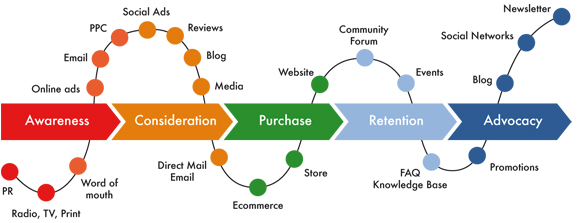
Synergy comes from the right mix, at the right time, with the right creative message. Beware commission driven specialists selling one solution to solve every problem. You’ll get less than you pay for.
Glenn Mabbott
Creative Director & Principal
UNOmarcomms
This article first appeared in AdNews
Read MoreSurvey reveals SMEs fail to measure ROI of online ads
A Yellow Pages survey of 1,800 Australian business owners* has found 69% of small and medium enterprises don’t measure the return on their online ad spend. What’s really surprising in this era of accountability is the finding that only one in 10 base their decisions on where to advertise on the ROI delivered.
What amazes me is the disconnect between business owners increasing desire to do more with less and the missed opportunities these findings reveal.
Advertisers keep telling me they love advertising online because it’s so much cheaper than traditional media. It might be cheaper to buy an adword campaign than a press ad, but are they getting a better return from those clicks?
Do you know which half of your advertising works?
The age-old saying “I know only half my advertising works, if only I knew which half” is just as true of online ad spending as off. The good news is it’s much easier to measure ROI of online marketing than the kinds of activities you used in the past. New technology makes it possible to know what works online and why. Business Intelligence means your spending can truly become an investment with predictable returns.
So if you count yourself amongst the majority of SMEs that don’t have a digital business strategy, maybe you should make it a priority to develop one. After all, there aren’t many things you can do so quickly and effectively that will leave the majority of your competitors behind.
How to measure your marketing ROI
New technologies have also made it much easier to track the performance of your offline advertising and promotion activities. We recently completed another test market campaign for an FMCG customer. In the past it was only major brands that could afford to put in place the kinds of tools needed to measure the ROI of integrated campaigns. Today even challenger brands can track the performance of programs that largely use traditional media because online research, scan data, real time field force reporting and analytics tools are no longer cost prohibitive.
The test and learn approach we have taken with this brand over the last few years has helped lift them above the pack. From being one of half a dozen small players competing for share against a long established multinational, our client is now a clear number 2 in their category. Do you know how much of your marcomms budget is working? There are no excuses because now you can.
* Survey published December 2010


"There are known knowns; there are things we know we know.
We also know there are known unknowns; that is to say, we know there are some things we do not know.
But there are also unknown unknowns – the ones we don’t know we don’t know."
While you may not like his politics, this famous quote from Donald Rumsfeld preceding the US invasion of Iraq perfectly sums up the dilemma faced by business owners today.
People are punch drunk from 5 years of relentless financial destruction of the world’s capital markets. Meanwhile, technology, and especially the digitisation of the world, has seen the pace of change of commerce reach incomprehensible pace. Is it any wonder business managers are floundering?
Challenger brands are making the most of this time of change to gain an advantage over competitors
Many business owners still think they can wait things out until things return to “normal.” What they don't know is the new model for success demands the ability to try new things, quickly and often.
Renee Todres heads a team of digital specialists at Tipping Point that have been helping businesses transform often complex transactions with their customers into simple ones. From BT to Elle Bache, once complicated business processes are being replaced with simple, intuitive interactions that make customers feel in control. Renee makes a wonderful observation –
"to learn you need to listen to yourself less."
Tipping Points approach is to add value by finding new insights. One way to succeed today is to recognise the limitations of your known knowns. Then seek out specialists that can help you discover the unknown unknowns. Get to know the ones that can help improve your position against your competition. And have the confidence to act on those new insights knowing the biggest threat to businesses today is business as usual. The Aussie attitude that she’ll be right now almost certainly guarantees failure.
I'm not suggesting spending all your energies on research. We’ve all seen managers fall into the paralysis by over-analysis trap. Too much data can actually hinder making effective business decisions. According to IBM’s 2012 global survey of 1700 CEOs, asking customers what matters to them is now more useful than financial analysis.
"Of course we need information and insight, but what we need most is the capability to act on it."
Unit head, Government, Hong Kong
In the words of Boston Consulting, today in business “the spoils go to the nimble.” We have found our challenger brand clients are winning by trying new and interesting things, fast and often. In the past you needed big budgets and big balls to try something different. There are now technologies that allow marketers to test new strategies while limiting financial risks.
As Renee and other niche specialists have shown me, it’s surprising how much there is to know that the big brands don’t, simply because they aren't looking.
Read MoreAll those for firing the Marketing Managers? Any against?


When they leave the office for the holidays, many marketing managers won’t realise their role may be restructured out of existence in the New Year. Over the Christmas break, CEOs around the country will be re-appraising who is an expendable cost to the business, versus who is an income generator.
Who will defend so many marketing managers when the case that has been building against them throughout 2012 is so strong?
Here is my snapshot of some of the evidence CEOs may be considering as they weigh up whether to fire their marketing managers:
Evidence A
Many of the tasks that CEOs thought only marketing managers could do can now be Googled. From 99 Designs to freelancer.com any CEO can buy marketing stuff cheap. Whether it’s designing websites or mailers, SEO or adwords, printing or promotions, everything is just a keyword search away. Who cares if you don’t know which half of your advertising works now you can buy it direct at third world prices?
Evidence B
According to this year's Roy Morgan annual professions ranking, marketers have failed again to rise much above used car salesmen. What CEO wants someone with less credibility than a real estate agent on their team? Consider this evidence alongside the growth in Australia of the casual workforce and outsourcing generally.
If you must have a marketing manager, why not buy by the hour, save on fixed and overhead costs.
Evidence C
CEOs have never believed marketers anyway. Fornaise regional survey of CEOs in 2011 found 75% did not value marketing managers opinions at a board level. In July this year the number had increased to 80%.
In November a follow up survey found seven in 10 CEOs hold themselves "somewhat responsible" for marketers’ poor perceived business performance because they have given up on holding their marketing managers accountable. CEOs gave up measuring the performance of their marketing managers. If it isn’t measurable, it won’t be long before the accountants decide marketing managers are an expensive indulgence a lean 21st century business can do without.
Evidence D
Business confidence is at it’s lowest level for four years. More companies went out of business in Australia in the last quarter than any other.
"She’ll be right" is now more wrong than ever. CEOs will have to change the way their business operates to survive. If they don’t know what marketing managers do, it’s an easy place for them to start cutting. As AdNews reported, one recruiter said recently, “companies want to hire revenue generators, and see marketers as passengers not drivers.“
Evidence E
How many CEOs actually know what marketing is? Consider one of the 4 Ps of marketing, price. In the FMCG industry, paying a rebate to Woolworths for a price promotion is still considered a marketing investment, not the sales tool it is.
Evidence F
Consider the other 3 Ps as they apply to businesses today. When do CEOs involve marketing managers in product development, or distribution innovation, or the building of a Business Intelligence driven CRM program? These new silos now fall under Strategy and Innovation Manager or the Supply Chain and Technology Integration Manager or the Chief Information Officer.
Is there a case for marketing managers?
The evidence doesn’t look good if the CEO doesn’t realise marketing managers can add value by thinking across silos. enabling the parts to work in synergy.
The Fornaise study found CEOs “think marketers have continuously failed to unquestionably and consistently prove in the boardroom that their marketing strategies, activities and campaigns generated actual business growth.”
To grow today you have to become a successful challenger brand. To be relevant today marketers have to champion at the board level the power of marketing to create a challenger brand.
If marketers aren’t in the boardroom, either the accountants, the salesmen, even the IT department will contend they need more of the budget to grow the business. Why not take it from the marketing pot, it’s just an artsy fartsy waste of money after all? Isn’t it?
12 days of vintage Christmas ads

Have you heard about the uproar surrounding the latest 'sexist' Christmas ad for ASDA in the UK? Here's your chance in case you missed it.
It seems that history is repeating? Here's a fun look at UNO's 12 days of vintage Christmas ads. They certainly gave us a few laughs!
On the 1st day: What more could a girl ask for?!

On the 2nd day: Should you be tempted to over indulge...

On the 3rd day: What could it be?

On the 4th day: It's the thought that counts!

On the 5th day: The perfect stocking filler!

On the 6th day: Foam filled fun for all the family!

On the 7th day: Taking care of Christmas!

On the 8th day: A shame they didn't make them for dogs too?

On the 9th day: Say it with... spoons?
On the 10th day: We all know that Santa wears red and white because...
On the 11th day: We're sure ASDA would approve!

On the 12th day: Relax in the comfort of your own home
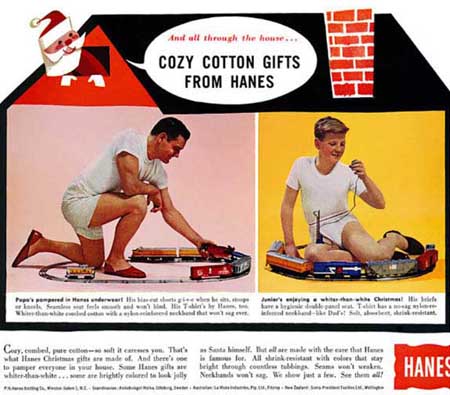
Oh what the heck! One more!

Big businesses' loss can be your gain


In the last few weeks business owners have been warned by the head of one of Australia’s biggest mining corporations that if we don’t change our business models we will die.
So who do business owners turn to for advice? In AdNews the marketing head of one of the big 4 banks reveals agencies don’t get digital. And the CEO of one of the biggest media planners in the country said "anyone in the media industry who claims they know what is happening is lying."
How many consultants does it take to change a light bulb?
Too late, fibre optics and LEDs have changed the market.
Every manager who has grown a business understands the value of seeking advice from specialists, you can’t be an expert at everything. Today we have the added problem that most so-called experts learnt their skills pre-Internet. Most business coaches are dinosaurs, as the world of commerce changes at ever increasing pace, conventional methods won’t save your business if the customer has evolved to a new way of life.
Think biz is tough? It’s even tougher for big businesses
Don’t panic. Unless you are number 1 in your category, you have less to lose by changing the way you play to fit in with the new rules that are being written by the customer. If you are a mid sized business today you have an advantage that in the past was a handicap. Yes, smaller is more nimble. Big businesses with big investments in infrastructure, systems and sunk costs can’t easily re-invent themselves. Think of all those silos of managers in big companies who have to hang in there for another 5 years because their super was decimated. They are a dead weight that slows down change.
Companies falling out of the top 3 in a given year:

Market share leaders that are the profitability leaders:

Forget the past, where’s the future profit coming from?
Most likely from something you are good at now, but not focused on. If you are a mid market player and still in business, you obviously have enough retained knowledge to draw on. Here are some examples of where UNO's clients have found profit opportunities:
- For a manufacturer it was cutting out the wholesalers.
- For a premium winemaker it is leaving Coles and Woollies to the major brands and growing high margin club membership.
- For a financial services B2B supplier it is repackaging bite-sized insights for the consumer market.
Today more than ever, get to know those who know
What you most need now is a trusted advisor who can draw upon a network of today’s specialists. To grow today, you need to re-invent your model, refresh your offer and relaunch by integrating traditional and new ways to market.
Forget incremental improvements. A few percent saved on input costs and a couple more from efficiency gains won’t save you when the competition pockets a whopping 30%+ of margin by removing an entire step in the route to market.
There’s an idea. Better to do it now, or be done over?
For a better career, get a life as a sponge


Many people in marketing seem to think they are judged on what they will do this week, while many managers think it’s about avoiding mistakes by doing very little. Rather than worry about what others may think of your actions/inactions in the short term, a recent conversation with a self-made squillionare reminded me of what it takes to become successful in business life. It’s not about you – soak up other people’s experiences.
Curiosity is the key
This founder of many businesses was as keen to ask questions about my challenges, as I was to learn about his successes.
Creative people continue to take the passive role of waiting for a brief, hoping the application of their current skills to their next project will bring the recognition they deserve. Meanwhile marketing managers act like thought police, determined to minimise all risks on their watch. So the brief ends up something like this: do something safe, measurable (as in lets make sure there are no nasty surprises), something a bit like someone else has already done, and all for less than it cost last time. This lack of desire to explore the unknown is killing creativity in Australia. Yet it’s creativity that builds wealth. Avoiding risk guarantees smaller returns, or none at all. Cutting margins does not create wealth, it just means you’ll spend your way to mediocrity a bit slower.
Today for a business to thrive it has to be a challenger brand. That’s an old company doing things in a different way, or a new one doing new and interesting things. Being a challenger is not about fine-tuning or polishing what you’ve always done. A business that’s in a well-worn smooth groove, just like a career, soon discovers it’s actually in a rut, going the wrong way. New isn’t always better, but better is always new.
If you’re curious to know what it takes to be better at what you do, you’ll do better than your peers. Curiousity, the squillionare says in one of his many books, is what it takes to succeed. It’s more than just appreciating that you don’t know everything. It’s wanting to know what Donald Rumsfeld memorably described as “the unknown unknowns.” Rather than selectively listening to those around you that you feel comfortable with, avoid making bad decisions by seeking out the wisdom beyond your network.
If you’re an art director, it’s time you hung around with some media gurus, marketing managers with entrepreneurs, accountants with digital user experience designers. Innovation after all comes from outside an industry, it’s not found fiddling around with what your category already does. And today if you don’t innovate you and the business will die.
I’ve often explained my life as that of a sponge. From childhood I wanted to know everything about everything. As I’ve met people with passions for things I know nothing about I’ve soaked up drops of wisdom. You’d be surprised what lateral connections from my sodden sponge can draw just the right drop, at the right time, to create an innovative answer. Whatever your role or experience, take every opportunity to learn from others. It helps to be open about your ignorance in front of experts. I’m always asking the silly questions. I usually find if they really are experts, they will gladly share their wisdom. Soak it up.
What's more important to CEOs - financial analysis, or customer insight?


We now work in a world awash with data. But too much data can actually hinder making effective business decisions. According to IBM’s 2012 global survey of 1700 CEOs, asking customers what matters to them is now more useful than financial analysis.
"This is now a continuous feedback kind of world, and we need the organizational nimbleness to respond."
CEO, Financial Markets, USA
"Of course we need information and insight, but what we need most is the capability to act on it."
Unit head, Government, Hong Kong
So how can you get to know your customers better? While there is no substitute for face-to-face, the survey found CEOs of outperforming businesses believe social media is the next best way to gather insights. More importantly, these insights are helping them take action.
In the words of Boston Consulting, today in business "the spoils go to the nimble."
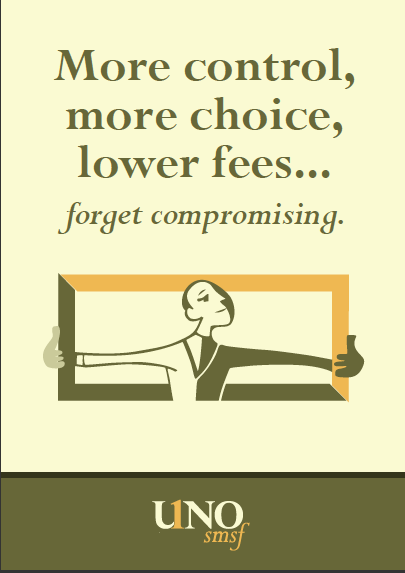






Scan the QR code for our contact details.
Download the Neoreader app.
© COPYRIGHT 2013 UNO marcomms Privacy